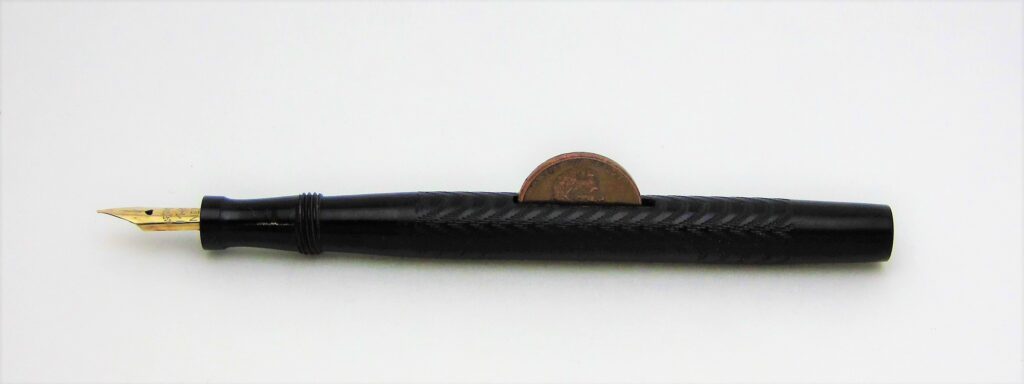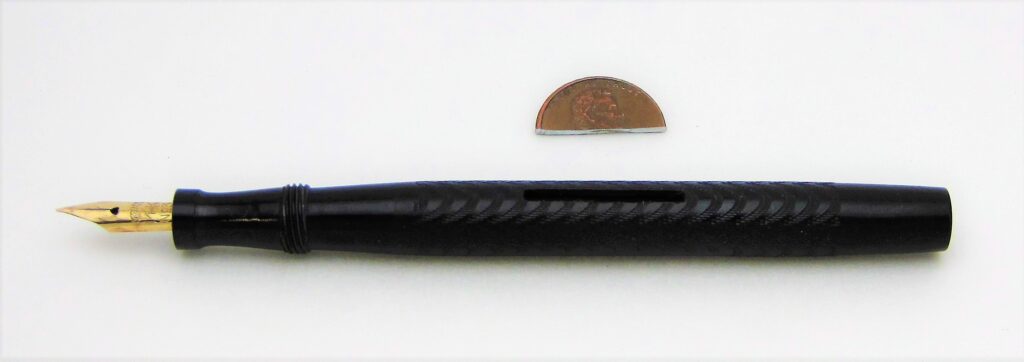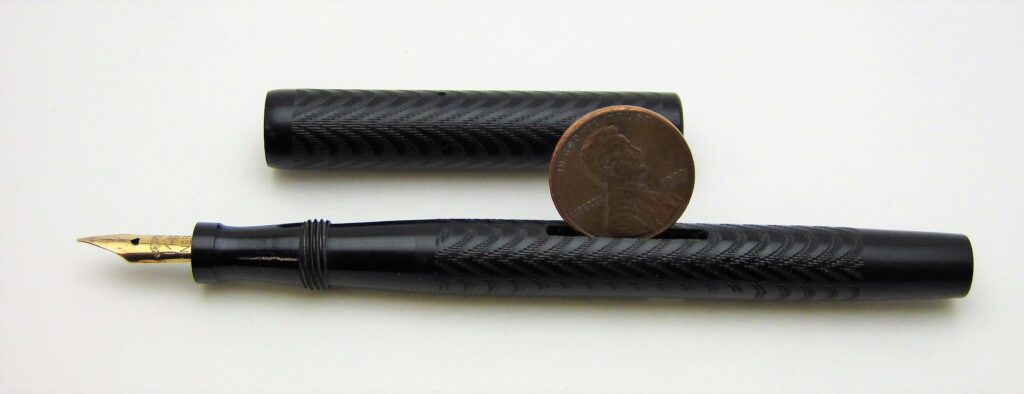Cut a slot in the pen, and call it a filling system!
I consider a coin filling system on a vintage fountain pen to be a hump filler with a stowable hump. I know. It’s a stretch. But I like the idea, and this way it fits into a category. Decide for yourself where this fits into stylophylogeny. After all, it is a new science that will certainly evolve over time.
Just like the legless lizard is still a lizard and not a snake, the lowly Coin Filler is also seen as something it is not. (Note: There is significant editorial disagreement over this pen’s place in archaeostylophyogeny.) The coin filler gets no respect. Unless it is a Waterman. It is viewed as a cheap, almost lazy way to make a self filler. You just cut a slot in the pen and call it a filling system. It does not seem to have ever been patented, and it was used by multiple pen makers, including the inexpensive Eagle metal pen, Sheaffer Craig sub brand, and later, a higher quality Waterman (that came with its own Waterman coin, I presume in case you were out of money after buying such a nice pen). To me, this is a hump filler with a detachable hump. And by detaching the hump, there was no need for a complex locking mechanism to secure the hump from accidental sac compression. The hump is stored as far away from the pen as possible (such as in a completely different pocket) making it impossible to accidentally squeeze the sac. Waterman production is estimated to be the first half of the 1910s. Craig pens are no earlier than that. But allow me to add a point for academic style argument/discussion. If one needs to have a separate coin, is this actually a “self-filling” pen?




